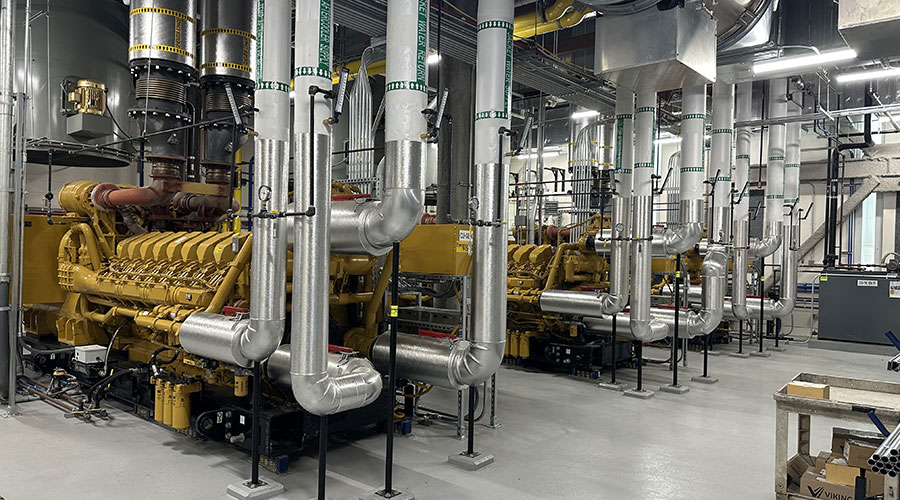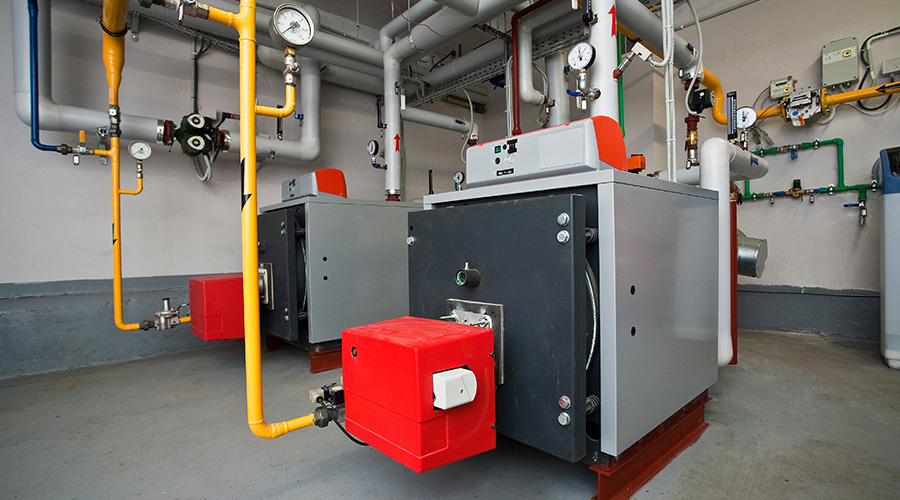Smart Boiler Systems Maximize Hospital Efficiency
These systems ensure the hospital can operate independently for up to four days during a grid outage
Smart boiler and burner management systems continuously collect and analyze key operational data, including steam and feedwater flow, drum level, stack temperature and oxygen levels, natural gas and fuel oil consumption, as well as burner modulation and the status of safety devices.
This data is used for real-time performance optimization and predictive maintenance functions, such as:
- Annual efficiency tuning. Combustion engineers use calibrated analyzers and trend data to fine-tune combustion levels, maximizing thermal efficiency and minimizing emissions.
- Predictive diagnostics. Operators and facility technicians review trends to detect early signs of inefficiency or component wear, reducing the risk of downtime.
- Safety and alarm reporting. All combustion faults and safety device statuses are displayed directly on the control panel. This enables immediate diagnostics and swift operator intervention, eliminating the need for manual troubleshooting.
This approach ensures that each component operates within optimal parameters, automatically adjusting inputs to meet fluctuating hospital demand with the lowest possible energy use. The boiler data enables technicians to quickly assess overall plant efficiency and monitor multiple levels of advisory alarms on the system and operating equipment to identify potential issues early and optimize overall plant performance.
With controls fully integrated into the hospital’s PLC network, much of the system runs with minimal manual oversight, which is crucial in a state like Minnesota where advanced operator licensing requirements can strain staffing.
In many hospitals, control systems are left in manual mode, which can compromise energy efficiency. In contrast, the CUP’s automation enables the hospital to meet high performance and safety standards without requiring round-the-clock staffing.
Bradley and his facilities team collaborated with KFI Engineers, JE Dunn and the project's mechanical and electrical contractors to select, install and optimize the equipment. Rentech and Preferred Utilities used Simoneau Sterling — Abbott Northwestern Hospital’s legacy boiler mechanical contractor — for system commissioning and ongoing maintenance of the boiler and combustion equipment.
Operational improvements
Replacing the aging steam plants has resulted in substantial improvements in reliability, efficiency and operational visibility:
- Improved system uptime. Modern boilers and combustion systems reduce unplanned outages, ensuring consistent steam delivery for critical operations such as surgical sterilization, heating, laundry and humidification.
- Reduced maintenance costs. The updated boilers feature higher-quality construction and reduced use of refractory materials, translating to lower lifecycle maintenance costs and improved ease of service.
- Full-campus integration. An industrial automation provider implemented a centralized, plant-wide PLC system that aggregates data across the entire CUP, including boilers, gas turbines, generators, chillers and pumps. Operators can now monitor and trend performance from one interface, improving situational awareness and response times.
Smart boilers optimize steam production by dynamically adjusting output to meet real-time demand. At Abbott Northwestern, the heat-recovery steam generator paired with the gas turbine is efficient enough to meet the hospital’s entire winter heating load on its own, eliminating the need for additional boilers during peak heating season.
For a Level 3 trauma center, reliable power is non-negotiable.
“Abbott Northwestern Hospital’s CUP now includes a gas turbine that generates 4.2 megawatts — enough to power 3,000 homes — backed by three separate electrical feeders from different substations,” Bradley says. “If one source fails, the other two ensure our campus and critical equipment continue operating without interruption.”
Cogeneration technology featuring a gas turbine and a heat-recovery steam generator, allows Abbott Northwestern Hospital to generate electricity and steam from one fuel source, significantly improving overall efficiency and resilience. Also known as a combined heat and power system, the cogeneration process uses a boiler to produce electricity and heat simultaneously.
The CUP project also upgraded the hospital’s emergency power capacity, replacing nine aging generators with three high-performance, dual-fuel units. Besides using less diesel fuel than the older standby generators, these systems ensure the hospital can operate independently for up to four days during a grid outage.
The next phase of the CUP project is focused on further reducing emissions. Bradley and his team plan to replace the current burners with nitrogen oxide technology that is designed to lower nitric oxide emissions and help meet the stringent standards set by the Minnesota Pollution Control Agency.
“Our environmental goals are aggressive,” Bradley says. “This upgrade keeps us compliant while aligning with our long-term sustainability mission.”
Joel Williams is a freelance writer based in Frankfort, Illinois.
Related Topics:













